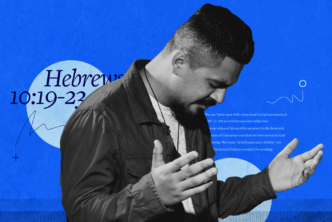We are heading into the summer vacation season, the perfect time to let your bible reading go on vacation too! I am issuing a Summer Reading Challenge for those wanting to either enhance (or begin!) their regular time in Scripture. How? I will be giving a different question to focus on in your reading that will help you identify key details and make new connections you might have missed. The questions are general enough that you should find a few examples not matter where you are reading.
The focus for this week is on the importance of “also” and “too” for making connections in the text. Normally things that we want to connect are placed right next to each other, like “this and that.” When they are this close, words like and, or, but make these connections clear. But when the things are not right next to each other, we use other words to make long-distance connections: also and too. These words instruct us to connect this person or thing with some other closely related thing in the previous context.
There are different motivations for writers to instruct us to look for these connections. The most common is to closely connect some new thing to a related thing in the previous context. For instance, in Matt 2:8 Herod is giving instructions to the wisemen who are looking for the newborn king so that they can worship him. He uses a connecting word to add his own name to the list of those wanting to worship Jesus: “Go, inquire carefully concerning the child, and when you have found him, report to me so that I also may come and* worship him.” We know from what follows that Herod’s only interest in locating him is to kill him, not worship him. Nevertheless, “also” here captures the use of adverbial καί (for you Greek nerds out there) to make an important connection.
Another reason for for using these connections is to make the added thing stand out for some reason, like in Gal 2:1. Paul states that he went up to Jerusalem with Barnabas and then adds (seemingly as an afterthought) that he also brought along Titus. Why not state that he took Barnabas and Titus, why list him separately? Problem to draw attention to him based on the stink his presence caused for the Judaizers because Titus was an uncircumcised Greek (see Gal 2:3).
The Challenge
As you are doing your bible reading, slow down and think about the connection that’s being made by the use of also and too. What connection is being made to the preceding context? What does the connection highlight?
And if you find any cool examples you hadn’t really noticed before, or have questions about something, head on over to the High Definition Bible Study group and post what you have. Let others benefit from what you’ve learned, or let them help you find an answer.
It’s easy to post directly from Logos to the Faithlife group, just select the text, right-click on it, then click the green Faithlife icon by Share.
***
If you enjoyed today’s post, like and share it with your fellow grammarians.
You can join the High Definition Bible Study group and keep tabs on this weeks conversation by click the button below.
If you have had some Greek and are longing to dig deeper into issues like these, then it’s time to dive into discourse grammar. And there is no easier or more effective way to get started than the New Testament Greek Discourse Bundle.






